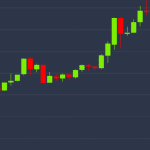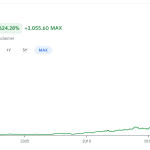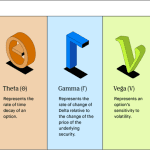We’ve split this area up into 3 different sections, each designed to help you learn more in your options trading journey. Click on any of the 3 images below to jump to that particular topical section.
Or, you can click here for an overview article on how to learn options trading.
Featured Article: Trade Genie Reviews : Are They Really The Best Choice?
There are a lot of different options alert services out there, all of which make big promises. But does Trade Genie actually deliver on what they promise?
Find out here as we dive into the the Trade Genie Reviews.
Featured Article: Investing in Options: A Beginner’s Guide
Learn all about the basics of trading options & what you’ll need to get started. Click here to read the article.
What is Options Trading? Learn all about options & how to trade them
This collection of articles have been written to help deepen your understanding of options trading and give you some specific ideas on how to trade them.
Featured Article: Options for Dummies - Trading Options for Dummies Guide

Options for Dummies is often the first book most beginners think about picking up first when they want to learn about trading options. But is it really worth your time?
Find out here in our review on options for dummies.
A Collection of Some of the Best Options Trading Books
[Beginner’s Guide] How to Learn Options Trading in Simple 5 Steps
Are you interested in learning options trading but don’t know where to start? This beginner’s guide will walk you through the simple steps required to get started. By following these tips, you’ll be on your way to mastering this exciting investment options trading adventure!
How to Learn Options Trading Summary:
- Understand what options trading is and how it works
- Learn the different types of options available
- Find a broker you can trust and open an account
- Study the markets and understand what moves stocks
- Choose the right option strategy for your goals
What is Options Trading?
Options trading is where you buy or sell contracts that give you the right to buy or sell an underlying asset at a set price on or before a certain date. Options trading can be used to speculate on the direction of a stock, commodity, or other assets, or to hedge against risk.
There are two types of options: call options and put options. Call options give you the right to buy an asset, while put options give you the right to sell an asset.
When you buy an option, you are not obliged to exercise your option, but if you do not exercise it, you will lose the premium that you paid for it.
The cost of an option is called it’s premium. The amount you pay for an option will depend on several factors, including how long until expiration, how volatile the stock is expected to be, and whether it is in-the-money (ITM), out-of-the-money (OTM), or at-the-money (ATM).
Options trading can be risky, but it can also be profitable. If properly understood and used, it can provide a way to diversify your portfolio and manage risk.
The Benefits of Options Trading
When done correctly, options trading can provide investors with a host of benefits, including increased profits, more flexibility, and greater liquidity. For example, options offer investors the ability to profit in both up and down markets.
Additionally, they can be used to protect other investments from downside risk.
Seasoned investors can also use options to enhance their portfolios by taking advantage of price movements in specific stocks or indices. And finally, options offer unparalleled liquidity which is critical for investors who need to quickly enter or exit a position.
While there are many benefits associated with options trading, it is important to remember that it is a risky investment strategy and should only be undertaken by those who understand the risks involved and how the market works.
The Risks Associated with Options Trading
For many people, options trading represents a way to make quick and profitable trades due to the leverage involved.
But with that said, there are also significant risks associated with this type of trading.
One of the most common risks is known as “time decay.” This is the term used to describe the decrease in value of an option as it approaches its expiration date.
Another risk associated with options trading is “volatility.” This refers to the fluctuations in the price of the underlying asset – such as a stock or commodity – that can occur over a short period of time.
When prices are volatile, it can be difficult to predict which way they will move, making it hard to profit from options trades. When volatility is high, it often results in options premiums becoming a little more expensive as well.
Finally, there is also the risk that the options market itself may be subject to manipulation. This can happen if one or more large traders attempt to artificially drive prices up or down in order to make profits at the expense of other investors.
While options trading can be profitable, it is important to be aware of these potential risks before entering into any trades.
Learn the Different Types of Options Available
When it comes to options, there are two different types available, the call options and the put options trading.
Call Options
Call options are a type of derivative (option) that gives the holder the right, but not the obligation, to buy an asset at a certain price within a certain time frame. Call options are often purchased if the trader things the underlying asset will increase in value.
For example, let’s say you believe that ABC Corporation’s stock is going to increase in value over the next year. You could buy a call option that gives you the right to purchase 100 shares of ABC at $50 per share anytime within the next year. If the stock does indeed rise to $60 per share, you can exercise your option and purchase the shares for $50 each, then turn around and sell them immediately for a profit of $10 per share.
Of course, if the stock doesn’t rise in value or falls below the strike price, you will simply let the option expire without exercising the contract and you will have lost the money you initially put up to buy the call contract.
While there is always some risk involved with any investment, call options provide a way to limit your downside while still giving you the potential to profit from favorable price movements.
Put Options
Put options are a type of derivative (option) security that gives the holder the right, but not the obligation, to sell an underlying asset at a specified price within a certain time frame. Put options can be used as a hedging tool to protect against downside risk in a portfolio, or to “go short” on a stock.
For example, if an investor owns shares of ABC Company and is worried about a potential drop in the stock price, he/she could buy a put option to hedge against this risk.
If ABC’s stock price does indeed fall, the put option will increase in value and offset some of the losses from the stock position.
Conversely, if ABC’s stock price rises, the put option will lose value.
Put options are most beneficial when an investor expects a stock to drop in price.
Tips for Success in Options Trading
Options trading can be a great way to make money, but it takes more than just luck to be successful. Here are a few tips to help you get started on the right foot.
First, make sure you have a clear understanding of how options work before you start trading. Taking risks if you don’t know what you’re doing is just gambling.
Second, always do your homework before placing a trade. Keep an eye on the news and study the charts to get a feel for where the market is headed.
Third, don’t be afraid to take some risks. Sometimes the biggest payoffs come from making bold trades. But don’t get too reckless – always have a stop-loss in place to limit your losses if the market goes against you.
Finally, don’t get discouraged if you lose money on a trade. Everyone makes bad calls sometimes – the key is to learn from your mistakes and keep trying. If you can stay disciplined and focused, there’s no reason why you can’t be successful in options trading.
Find a Broker You Can Trust and Open an Account
When it comes to options trading, finding a broker you can trust is essential. Not only do they need to be knowledgeable about the market, but they also need to be honest and transparent about their fees.
Fortunately, there are a few things you can do to find a trustworthy broker.
First, ask around for recommendations from friends or family who have experience with options trading.
After you’ve done this, check out online reviews to get an idea of what others have said about the broker.
Once you’ve found a broker you’re comfortable with, open an account and start trading!
Study the Markets and Understand What Moves Stocks
To be a successful options trader, it’s important to understand how the stock market works. By studying the markets and understanding what moves stocks, you’ll be in a better position to make winning trades.
There are a number of factors that can affect stock prices, such as economic indicators, company news, and global events.
By keeping abreast of these developments, you’ll be able to make informed trading decisions.
Additionally, it’s also important to have a good understanding of technical analysis. (Please see our section on getting started in technical analysis here.)
This will allow you to identify patterns in the market and make profitable trades.
With a bit of research and practice, you can become an expert options trader.
Choose the Right Option Strategy for Your Goals
When it comes to options trading, there is no one-size-fits-all strategy.
The best approach for you will depend on your goals, risk tolerance, and the underlying security.
For example, if you are looking to generate some income, you might consider selling covered calls.
If you are bullish on a stock, you might buy calls.
And if you are bearish, you might buy puts.
The key is to align your strategy with your goals and objectives.
There is no right or wrong answer, but there is a wrong answer for you.
So take some time to figure out what makes sense for you and then trade with confidence knowing that you have chosen the right option strategy for your goals.
When people were wondering about how to learn options trading they often asked these related questions…
What is the best way to learn options trading?
What do you mean by exercising an option?

When you exercise an option, you are buying or selling the underlying security at the stated price. For example, if you have a call option with a strike price of $50 and the current market price is $60, then exercising your option would mean buying the stock at $50 even though it's currently worth $60 on the open market.
What are the alternatives to stock options?

An alternative is to buy stocks outright. This involves investing in a particular company and hoping that its stock price will go up over time. Another alternative is using margin trading, which allows you to borrow money from your broker in order to buy more stocks. This can magnify your profits (or losses) if the stock price moves in the right (or wrong) direction. Finally, another option is investing in ETFs or mutual funds. These vehicles allow you to invest in a basket of different stocks, thus reducing your risk exposure.
How are options taxed?
There are two types of options - short-term and long-term. The holding period of the options determines how they should be classified, with short-term options (less than 12 months) being taxed as stock while longer-term options (over 12 months) are considered capital assets. This means that any gain or loss on the disposal of the option is treated as a capital gain or loss.
What are back spreads?

A back spread is a type of spread trade where you buy and sell more options at different strike prices, usually with the same expiration date. The goal of this strategy is betting on one side or the other, with no regrets later on if the market doesn't act in your favor. You're essentially hoping that the market will move enough in one direction to make all of your options profitable.











